
Tomás González left his MinMinas post in March and April’s gasoline price announcement was delayed by several weeks. May’s was on time but in June prices were frozen until further notice. Now it appears if July’s are as well.
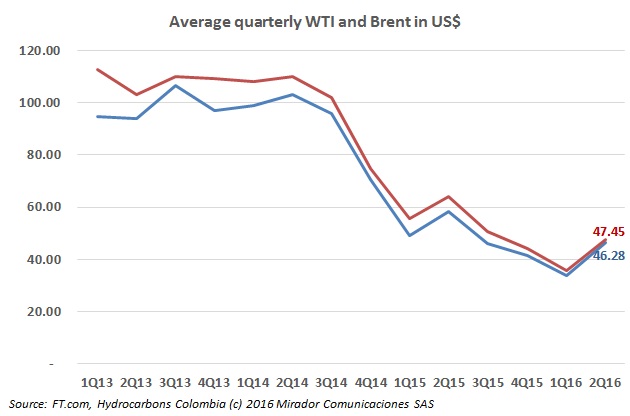
Oil prices rallied in 2Q16 giving creating the first sequential increase in a year. Brent closed above US$50 on July 1st (our last weekly measurement of the quarter) but prices are still below last year’s average.
Accusations of unfair competition, of a monopoly and aggressive tactics against family-owned fuel stations have made press, with a particular emphasis on Terpel, which critics say has crossed a line as a wholesaler and retailer.
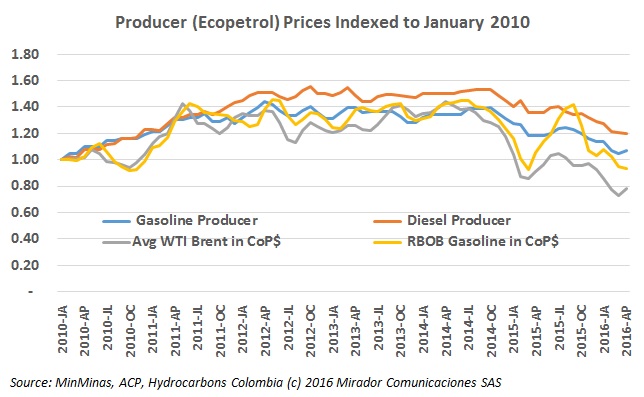
The Minister of Mines and Energy (MinMinas) Germán Arce confirmed that the ministry is open to studying a proposal from the truckers association to lower the price of diesel, as a trucker strike drags on since the beginning of the month.
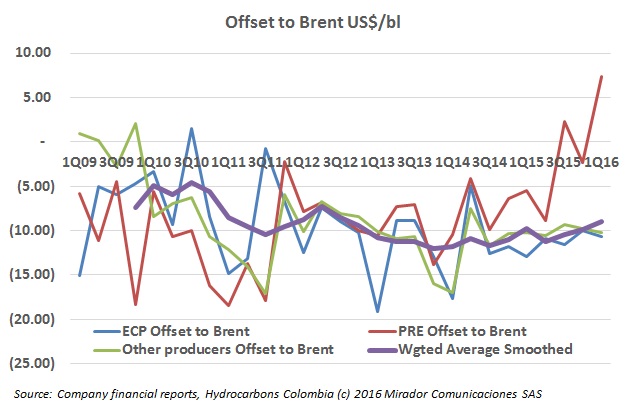
The fall in global crude benchmarks took Colombia’s realized sales price with it. According to figures from the Colombian Petroleum Association, Colombia’s price averaged US$26/barrel during the first quarter of the year.

Senate President Luis Fernando Velasco accused the government of charging illegal taxes in its fuel price formula even after they were struck down by a Constitutional Court ruling and alleged citizens are essentially subsidizing Ecopetrol (NYSE:EC).

A question from a subscriber – what is Colombia’s internal demand for crude? – provoked a top-of-mind answer, which is often not the correct answer. We were close but the graph shows the big numbers and the trend.
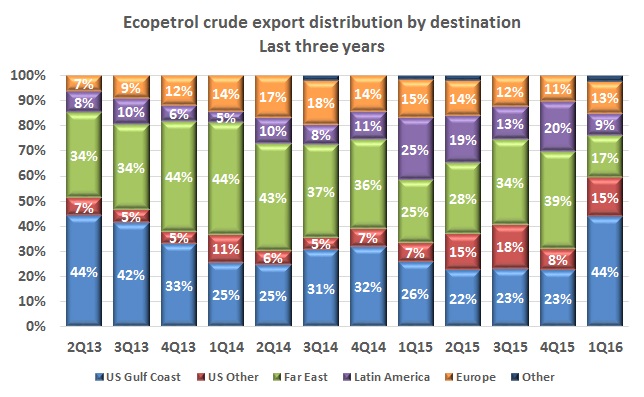
Ecopetrol’s (NYSE:EC) export distribution in 1Q16 showed a big shift to the US, the Gulf Coast in particular, and away from the Far East, which had been a strategic market for the NOC.
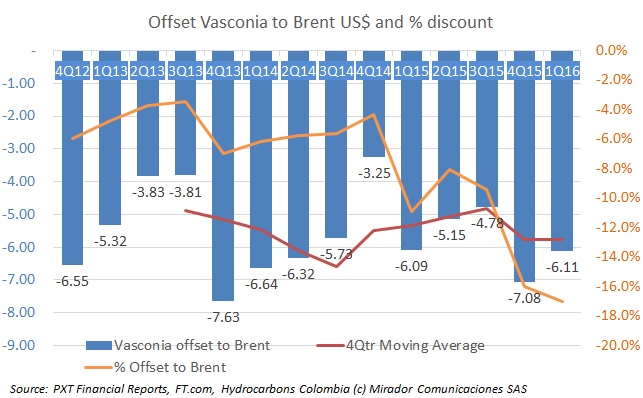
As oil prices have slid, we have been asked about trends in offsets to various oil price benchmarks. We found quarterly Vasconia figures (thanks to Parex) and so were able to check the offset between Colombia’s most important benchmark and what is today the most important global benchmark, Brent. The gap or offset between WTI and Brent has shrunk as prices decreased, what happened to Vasconia and Brent?
In a dramatic shift over just a few weeks, the rain brought back Colombia’s hydro resources, the halted Guatapé plant started working again and thermal generators slashed their natural gas purchases. Now paired with a global surplus of gas, low prices make some of Colombia’s strategic projects, especially offshore, look uncertain.